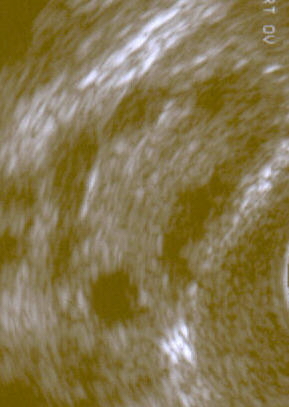Ho sabíeu?
Podeu fer doble clic en una paraula per a buscar-la a TermGallery.
Podeu fer doble clic en una paraula per a buscar-la a TermGallery.
Significats de polycystic ovaries en anglès
portuguès
síndrome de stein-leventhal espanyol
sindrome del ovario poliquístico català
síndrome de stein-leventhal 
Set of symptoms caused by elevated androgens in females.
Sinònims
Examples for "pcos"
Examples for "pcos"
1
Conclusions: We identified metabolites that might have causal effects on PCOS development.
2
Environmental factors are thought to be involved in the development of PCOS.
3
Cardiovascular abnormalities represent important long-term sequelae of PCOS that need further investigations.
4
Based on the combination of PCOS symptoms, women formed seven outcome groups.
5
The present study aimed to explore the potential environmental risk factors of PCOS.
1
In addition, 24% of the sisters had hyperandrogenemia and regular menstrual cycles.
2
This familial aggregation of hyperandrogenemia in PCOS kindreds suggests that it is a genetic trait.
3
Its association with indices of insulin resistance and hyperandrogenemia is also seen in the same group.
4
We propose that hyperandrogenemia be used to assign affected status in linkage studies designed to identify PCOS genes.
5
Conclusions: Adult female acne may be triggered by diet, stress, and cosmetics and there is a distinct hormonal milieu that accounts for hyperandrogenemia.
1
Obesity in polycystic ovary syndrome aggravates the underlying predisposition towards insulin resistance.
2
Obesity increases the severity of the phenotype in women with polycystic ovary syndrome.
3
Only women with known primary infertility or severe polycystic ovary syndrome showed inadequate pregnancy rate.
4
Flutamide plus the oral contraceptive pill is beneficial for acne associated with polycystic ovary syndrome.
5
The majority of these women have polycystic ovary syndrome.
1
Obesity in polycystic ovary syndrome aggravates the underlying predisposition towards insulin resistance.
2
Obesity increases the severity of the phenotype in women with polycystic ovary syndrome.
3
Only women with known primary infertility or severe polycystic ovary syndrome showed inadequate pregnancy rate.
4
Flutamide plus the oral contraceptive pill is beneficial for acne associated with polycystic ovary syndrome.
5
The majority of these women have polycystic ovary syndrome.
Ús de polycystic ovaries en anglès
1
No diagnoses of endometriosis or polycystic ovaries, nothing like that?
2
Although 82% of women with recurrent early loss have polycystic ovaries on ultrasound imaging, random serum LH concentrations are normal.
3
Twenty-one women with recurrent early pregnancy loss and 10 multiparous controls were investigated; 81% of them and one of ten control subjects had polycystic ovaries.
Aquesta col·locació està formada per:
Translations for polycystic ovaries
rus
portuguès
espanyol

